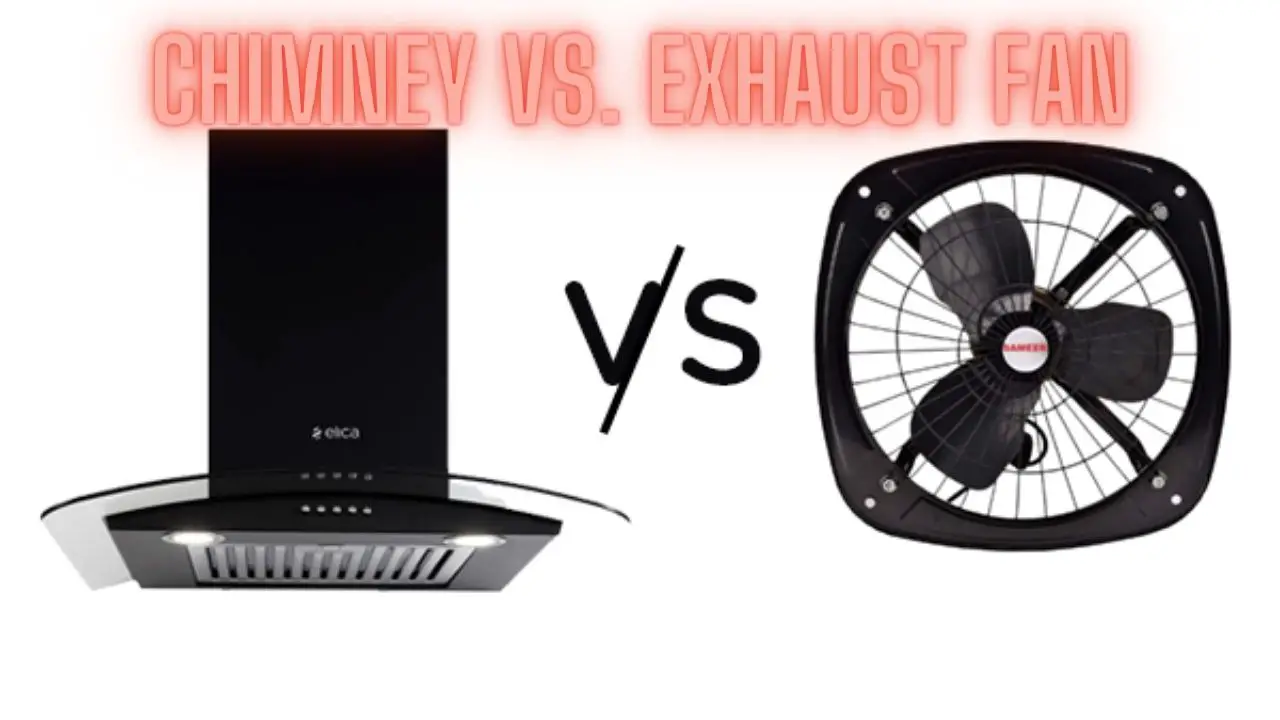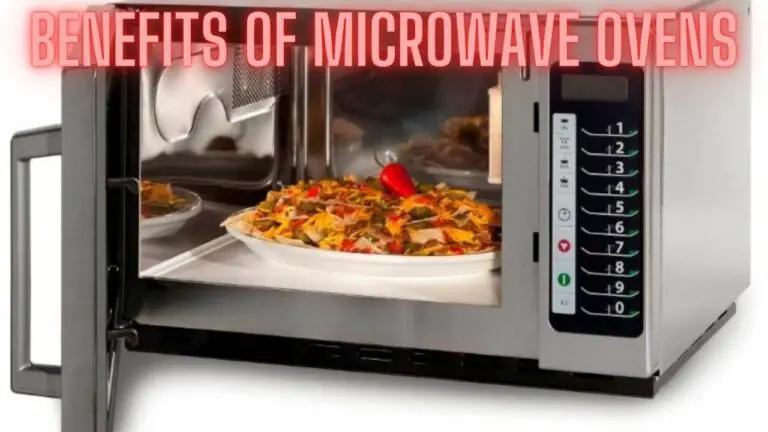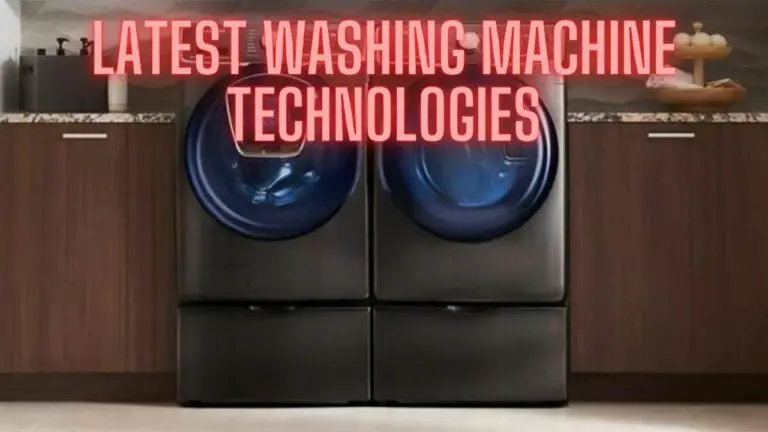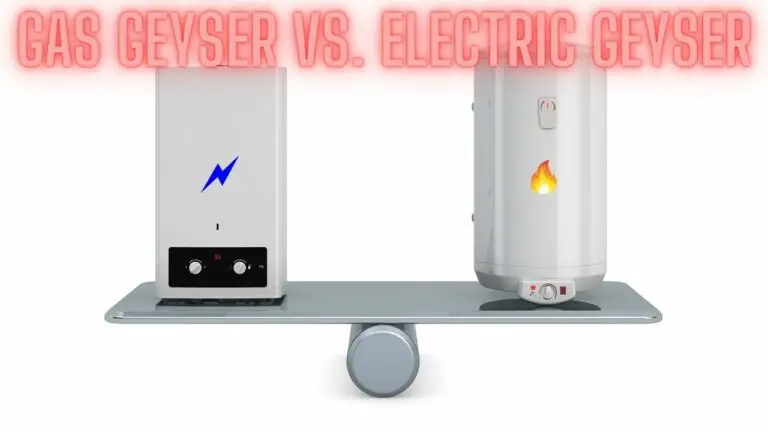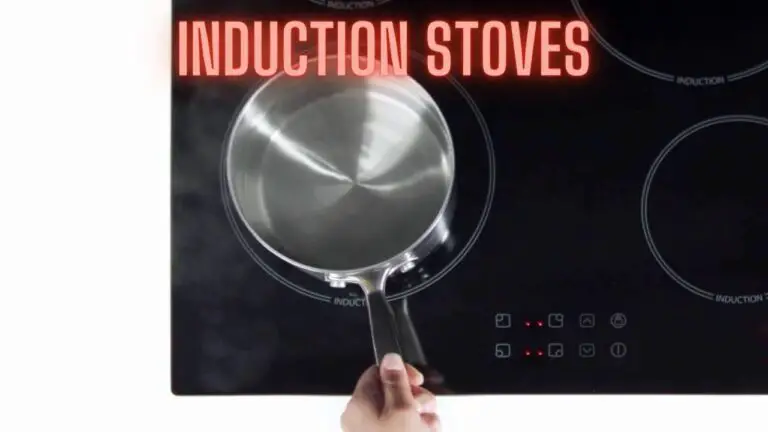Chimney vs. Exhaust Fan: Clearing the Air in Your Kitchen
Introduction
Kitchen ventilation is a crucial aspect of maintaining a healthy and comfortable cooking environment. Among the various options available for kitchen ventilation, chimneys and exhaust fans are commonly used appliances. In this comparison, we will explore the differences between chimneys and exhaust fans, examining their features, functions, advantages, and disadvantages to help you make an informed decision for your kitchen.
- Purpose of the Comparison:
- The purpose of this comparison is to provide readers with a comprehensive understanding of the differences between chimneys and exhaust fans. By examining their respective features, functions, and applications, readers can determine which ventilation option best suits their kitchen requirements and preferences.
- Importance of Kitchen Ventilation:
- Effective kitchen ventilation plays a vital role in removing smoke, grease, odors, and airborne contaminants generated during cooking. It helps maintain indoor air quality, prevents the buildup of harmful pollutants, reduces the risk of respiratory issues, and enhances overall comfort in the kitchen and surrounding areas.
As we delve into the intricacies of chimneys and exhaust fans, we aim to provide you with valuable insights and guidance to help you choose the right ventilation solution for your kitchen. Whether you prioritize smoke removal, grease filtration, noise levels, installation convenience, or budget considerations, understanding the nuances of these ventilation options will empower you to create a healthier and more enjoyable cooking environment. Let’s embark on this journey of exploration and discovery to uncover the differences between chimneys and exhaust fans.
Chimney
A chimney is a kitchen appliance designed to extract smoke, fumes, and airborne grease particles generated during cooking. Let’s delve into the key features, functions, advantages, and disadvantages of chimneys:
- Definition and Features:
- A chimney is typically mounted above the cooktop or stove and consists of a canopy or hood, a motorized fan, and a duct system that vents the captured air to the outside.
- Key features of a chimney include various fan speeds, filtration systems such as mesh or baffle filters, and optional features like lighting and digital controls.
- Functions and Capabilities:
- Chimneys are designed to capture and remove smoke, steam, cooking odors, and airborne grease particles produced during cooking.
- They use a powerful fan to create suction, drawing air through the filters and expelling it outside through the duct system, thus maintaining a clean and odor-free kitchen environment.
- Advantages:
- Effective Smoke and Odor Removal: Chimneys efficiently remove smoke, cooking odors, and airborne contaminants, keeping the kitchen air fresh and clean.
- Grease and Oil Filtration: Most chimneys are equipped with filters that trap grease and oil particles, preventing them from accumulating on kitchen surfaces and appliances.
- Enhanced Cooking Comfort: By removing excess heat and steam, chimneys help maintain a comfortable cooking environment, reducing discomfort and the risk of heat-related issues.
- Disadvantages:
- Installation Complexity: Chimneys require professional installation, including mounting the canopy, connecting the ductwork, and ensuring proper ventilation to the outside.
- Space and Aesthetic Considerations: Chimneys can take up valuable space in the kitchen and may not be suitable for smaller kitchens or spaces with limited ventilation options.
- Maintenance Requirements: Chimneys require regular cleaning and maintenance to ensure optimal performance and prevent the accumulation of grease and debris in the filters and ducts.
Despite these limitations, chimneys are essential kitchen appliances that offer efficient and effective ventilation, ensuring a clean, odor-free, and comfortable cooking environment. With proper installation, use, and maintenance, a chimney can significantly enhance the overall cooking experience in your kitchen.
Exhaust Fan
An exhaust fan, also known as a kitchen hood or range hood, is a ventilation appliance used to remove airborne contaminants, smoke, and odors from the kitchen. Let’s explore the key features, functions, advantages, and disadvantages of exhaust fans:
- Definition and Features:
- An exhaust fan is typically mounted above the cooktop or stove and consists of a canopy or hood, a fan motor, and a duct system that vents the captured air to the outside.
- Key features of an exhaust fan include multiple fan speeds, removable filters, and optional features such as lighting and control buttons.
- Functions and Capabilities:
- Exhaust fans are designed to extract smoke, steam, cooking odors, and airborne pollutants generated during cooking.
- They use a fan to create suction, drawing air through the filters and expelling it outside through the duct system, thereby improving indoor air quality and reducing the buildup of airborne contaminants.
- Advantages:
- Effective Smoke and Odor Removal: Exhaust fans efficiently remove smoke, cooking odors, and airborne pollutants, keeping the kitchen air clean and fresh.
- Versatility: Exhaust fans come in various sizes and designs to accommodate different kitchen layouts and cooking styles, making them suitable for a wide range of kitchen configurations.
- Space-Saving Design: Exhaust fans are generally compact and space-saving, making them ideal for smaller kitchens or spaces with limited ventilation options.
- Disadvantages:
- Noise Levels: Some exhaust fans can be noisy, especially at higher fan speeds, which may be bothersome in quiet or enclosed spaces.
- Limited Grease Filtration: While exhaust fans may come with grease filters, they may not be as effective at trapping grease and oil particles compared to chimney filters, leading to potential buildup on kitchen surfaces and appliances.
- Installation Complexity: Installing an exhaust fan requires careful planning and professional installation to ensure proper ventilation and effective operation.
Despite these limitations, exhaust fans are essential kitchen appliances that provide efficient ventilation, helping to maintain a clean, odor-free, and comfortable cooking environment. With the right installation, use, and maintenance, an exhaust fan can significantly improve the overall cooking experience in your kitchen.
Comparison between Chimney and Exhaust Fan
When choosing between a chimney and an exhaust fan for kitchen ventilation, it’s essential to consider various factors such as effectiveness, convenience, space requirements, and budget. Here’s a comprehensive comparison between the two appliances:
- Ventilation Efficiency:
- Chimney: Chimneys are generally more effective at removing smoke, grease, and odors from the kitchen due to their powerful suction capabilities and advanced filtration systems.
- Exhaust Fan: Exhaust fans are effective at removing airborne contaminants but may not offer the same level of suction power and grease filtration as chimneys.
- Smoke and Odor Removal:
- Chimney: Chimneys excel at removing smoke, cooking odors, and airborne pollutants, ensuring a clean and fresh kitchen environment.
- Exhaust Fan: Exhaust fans effectively remove smoke and odors but may not be as efficient at capturing grease and oil particles, leading to potential buildup on kitchen surfaces.
- Grease and Oil Filtration:
- Chimney: Chimneys come equipped with advanced filtration systems, such as mesh or baffle filters, designed to trap grease and oil particles, preventing them from accumulating in the kitchen.
- Exhaust Fan: Exhaust fans may have removable grease filters, but they may not be as effective at capturing grease and oil particles as chimneys, leading to potential buildup on kitchen surfaces and appliances.
- Noise Levels:
- Chimney: Chimneys tend to operate quietly, especially at lower fan speeds, providing a comfortable cooking environment without excessive noise.
- Exhaust Fan: Exhaust fans may produce more noise, especially at higher fan speeds, which may be bothersome in quiet or enclosed spaces.
- Installation and Maintenance:
- Chimney: Chimneys require professional installation, including mounting the canopy, connecting the ductwork, and ensuring proper ventilation to the outside. They also require regular cleaning and maintenance to ensure optimal performance and prevent grease buildup.
- Exhaust Fan: Exhaust fans are relatively easier to install and may be suitable for DIY installation in some cases. They also require regular cleaning and maintenance, including filter replacement, to ensure effective operation and prevent the accumulation of grease and debris.
- Space and Design:
- Chimney: Chimneys may take up more space in the kitchen due to their size and design, which may not be suitable for smaller kitchens or spaces with limited ventilation options.
- Exhaust Fan: Exhaust fans are generally more compact and space-saving, making them ideal for smaller kitchens or spaces with limited ventilation options.
- Cost Considerations:
- Chimney: Chimneys are typically more expensive than exhaust fans due to their advanced features, filtration systems, and installation requirements.
- Exhaust Fan: Exhaust fans are generally more affordable than chimneys, making them a budget-friendly option for basic kitchen ventilation needs.
In summary, chimneys offer superior ventilation efficiency, grease filtration, and odor removal compared to exhaust fans. However, exhaust fans are more compact, affordable, and easier to install, making them suitable for smaller kitchens or budget-conscious consumers. Ultimately, the choice between a chimney and an exhaust fan depends on your specific ventilation requirements, kitchen layout, and budget considerations.
Applications and Best Uses
Understanding the ideal applications and best uses of chimneys and exhaust fans can help you determine which option is best suited for your kitchen ventilation needs. Here’s a breakdown of their respective applications:
- Chimneys:
- Heavy Cooking: Chimneys are ideal for kitchens where heavy cooking is common, such as frying, grilling, or stir-frying, as they effectively remove smoke, grease, and odors generated during high-heat cooking.
- Large Kitchens: Chimneys are suitable for larger kitchens with ample space for installation, as they may require more room due to their size and design.
- Advanced Filtration: Chimneys are recommended for households that prioritize advanced grease filtration and odor removal, as they come equipped with sophisticated filtration systems to trap grease and oil particles.
- Exhaust Fans:
- Basic Ventilation: Exhaust fans are suitable for kitchens with moderate cooking activities and ventilation needs, providing basic smoke and odor removal without advanced filtration capabilities.
- Compact Kitchens: Exhaust fans are ideal for smaller kitchens or spaces with limited ventilation options, as they are more compact and space-saving compared to chimneys.
- Budget-Friendly Options: Exhaust fans are recommended for budget-conscious consumers or those seeking a cost-effective ventilation solution, as they are generally more affordable than chimneys.
- Combined Applications:
- Complementary Ventilation: Chimneys and exhaust fans can be used together to complement each other’s strengths and provide comprehensive ventilation coverage in larger kitchens or spaces with high cooking demands.
- Customized Solutions: Depending on your specific ventilation requirements and kitchen layout, you can choose to install either a chimney, an exhaust fan, or a combination of both to achieve optimal ventilation performance.
By considering the specific cooking habits, kitchen layout, and ventilation needs of your household, you can determine whether a chimney, an exhaust fan, or a combination of both is the best option for your kitchen. Whether you prioritize advanced filtration, space-saving design, or budget considerations, understanding the ideal applications and best uses of each option will help you make an informed decision for your kitchen ventilation system.
Considerations for Purchasing
When purchasing a chimney or an exhaust fan for your kitchen, it’s essential to consider various factors to ensure that you choose the right ventilation option that meets your specific needs and preferences. Here are some key considerations to keep in mind:
- Ventilation Requirements:
- Assess your kitchen’s ventilation needs based on the size of your kitchen, cooking habits, and the types of cooking activities you frequently engage in.
- Determine whether you require heavy-duty ventilation for high-heat cooking or basic ventilation for moderate cooking activities.
- Type of Cooking:
- Consider the types of cooking you commonly do in your kitchen, such as frying, grilling, or baking, as this will influence the level of ventilation required.
- If you frequently engage in heavy cooking activities that produce a lot of smoke, grease, and odors, you may require a chimney with advanced filtration capabilities.
- Space and Installation:
- Evaluate the available space in your kitchen and determine the most suitable location for installing the chimney or exhaust fan.
- Consider factors such as ceiling height, cabinet clearance, and proximity to the cooktop or stove when planning the installation.
- Budget and Affordability:
- Set a budget for your ventilation purchase and compare prices across different brands and models to find the best value for your money.
- Consider the long-term cost savings and benefits of investing in a high-quality ventilation system with advanced features and durable construction.
- Features and Functionality:
- Evaluate the features and functionality offered by each ventilation option, such as fan speed settings, filtration systems, noise levels, and optional accessories.
- Prioritize features that are essential for your ventilation needs, such as advanced grease filtration, adjustable fan speeds, or remote control operation.
- Brand Reputation and Warranty:
- Research reputable brands with a proven track record of manufacturing high-quality ventilation products and providing excellent customer service.
- Check product reviews, customer feedback, and ratings to gauge the reliability and performance of the chimney or exhaust fan.
- Look for ventilation options that come with a warranty or guarantee to provide peace of mind and protection against defects or malfunctions.
- Energy Efficiency:
- Consider the energy efficiency of the ventilation option, as this can impact your energy consumption and utility bills over time.
- Look for energy-efficient models with high airflow rates and low power consumption to minimize operating costs while maintaining effective ventilation.
By considering these key factors and conducting thorough research, you can make an informed decision when purchasing a chimney or an exhaust fan for your kitchen. Whether you prioritize ventilation performance, space-saving design, or budget considerations, choosing the right ventilation option will help you create a healthier and more comfortable cooking environment in your kitchen.
FAQS
What is the primary purpose of a chimney in the kitchen?
- The primary purpose of a chimney in the kitchen is to remove smoke, fumes, odors, and airborne grease generated during cooking. It helps maintain a clean and odor-free kitchen environment.
How does an exhaust fan work in the kitchen?
- An exhaust fan works by drawing in air from the kitchen and expelling it outside through a vent or duct. It helps remove cooking odors, excess moisture, and heat from the kitchen.
Which one is more effective at removing cooking odors, a chimney or an exhaust fan?
- Chimneys are generally more effective at removing cooking odors because they use filters to trap odorous substances and grease. Exhaust fans primarily expel air outside but do not filter it.
Are chimneys and exhaust fans equally effective at removing smoke from the kitchen?
- Chimneys are more effective at removing smoke because they are designed to capture and filter smoke particles. Exhaust fans can help with smoke removal but may not be as efficient.
Do exhaust fans also remove grease from the kitchen air?
- Exhaust fans do not have built-in filters to remove grease from the air. They primarily expel air and moisture. Grease removal is a specific function of chimneys, which use grease filters.
Are there different types of chimneys available for kitchen ventilation?
- Yes, there are different types of chimneys available, including wall-mounted chimneys, island chimneys (for kitchens with island cooktops), and built-in or under-cabinet chimneys. They also come in various designs and finishes to suit different kitchen aesthetics.
Can I install an exhaust fan in a kitchen with limited space or no designated installation area?
- Yes, exhaust fans are suitable for kitchens with limited space or no designated installation area for a chimney. They can be installed on walls or in windows, making them flexible and practical for various kitchen setups.
Do exhaust fans come with variable speed controls?
- Many exhaust fan models come with variable speed controls, allowing you to adjust the fan’s airflow based on your ventilation needs. This feature can help reduce noise when lower ventilation levels are sufficient.
Which option is more budget-friendly, a chimney or an exhaust fan?
- Exhaust fans are generally more budget-friendly compared to chimneys, both in terms of the appliance itself and installation costs. They are a cost-effective solution for many kitchens.
Do chimneys require regular maintenance?
- Yes, chimneys do require regular maintenance. This typically involves cleaning or replacing filters, depending on the type of filters used. Cleaning intervals depend on usage and cooking habits.
Are exhaust fans noisy when in operation?
- The noise level of exhaust fans can vary depending on the model and motor power. Some exhaust fans are relatively quiet, while others may produce more noise, especially at higher speeds.
Can I use both a chimney and an exhaust fan in the same kitchen for enhanced ventilation?
- Yes, some kitchens use both a chimney and an exhaust fan for enhanced ventilation. This combination can be particularly effective in larger kitchens or those with heavy cooking activity.
Can an exhaust fan be used in a kitchen with a chimney already installed?
- Yes, an exhaust fan can be used in conjunction with a chimney in the same kitchen. The exhaust fan can provide additional ventilation support, especially during heavy cooking sessions.
Conclusion: Breathing Easier in Your Kitchen
When it comes to kitchen ventilation, both chimneys and exhaust fans have their roles to play. Chimneys excel in providing effective smoke and odor removal while enhancing the kitchen’s aesthetics. On the other hand, exhaust fans are budget-friendly, easy to install, and suitable for kitchens with limited installation options.
To make the right choice, assess your kitchen’s layout, ventilation needs, and budget constraints. Whether you opt for the stylish efficiency of a chimney or the practical simplicity of an exhaust fan, you’ll be on your way to enjoying a cleaner and more comfortable cooking environment. Breathe easier in your kitchen as you whip up culinary delights, knowing that your chosen ventilation solution is there to clear the air.

